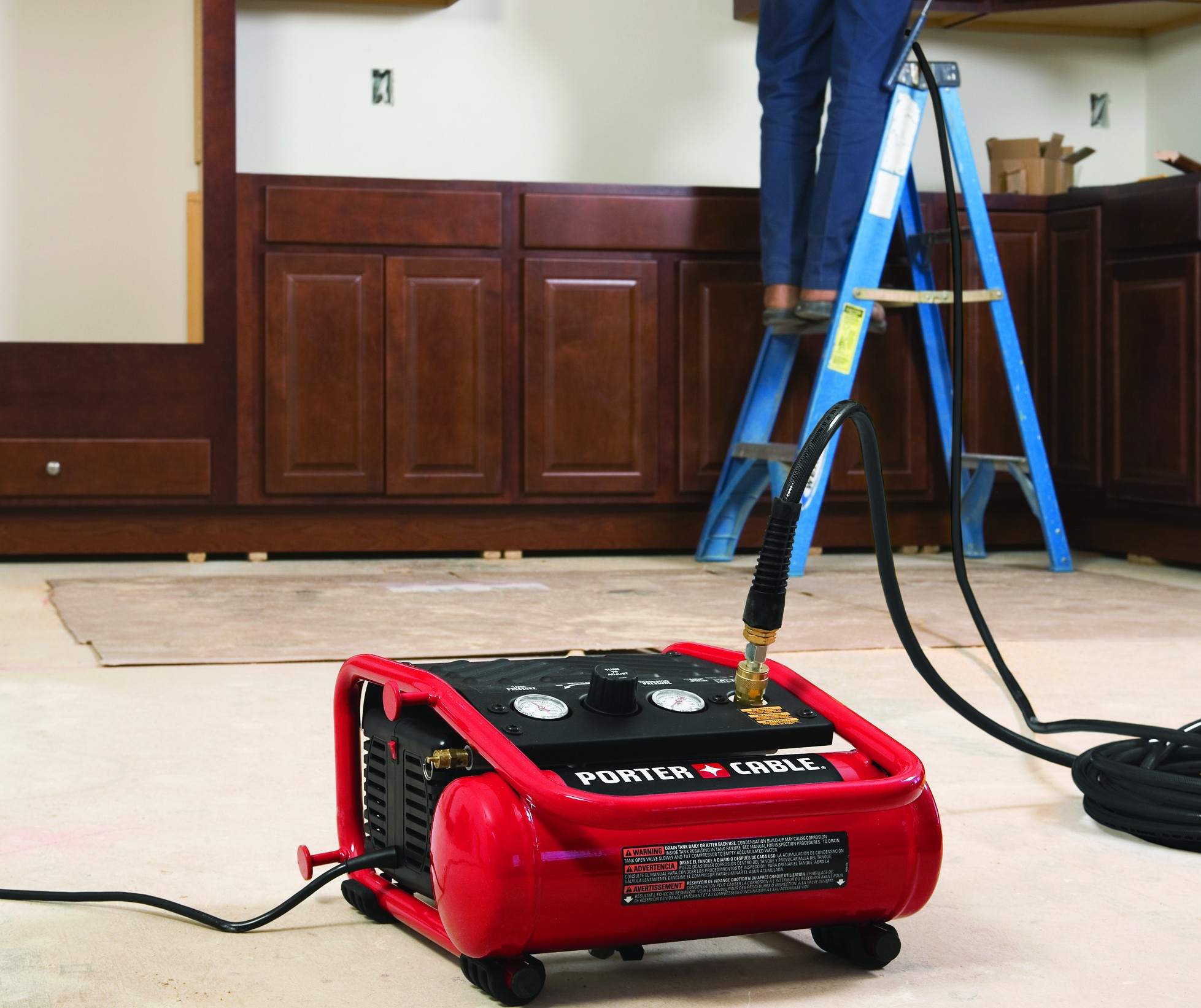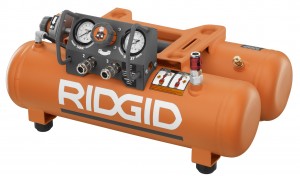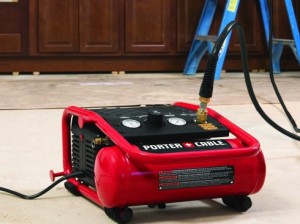
How to choose an air compressor
Air compressors can power a huge variety of tools that will make just about any job quicker and easier. So you don’t overspend or under-specify, you need to know how to choose an air compressor. First, analyze the requirements of the air tools you will be using. Each tool has a minimum requirement for air compressor tank capacity, pumping power (cubic feet of air pumped per minute or CFM), and the maximum psi of storage pressure.
In general, it is best to choose a compressor with a cfm rating that exceeds the tool cfm requirements by at least 25 percent to prevent overworking the pump and ensuring proper operation of the tool. In other words, a nail gun that requires 90 cfm would best be served by a compressor that produces 115 to 120 psi.
How to choose an air compressor type

Twin-stack compressors features two hot dog tanks stacked on top of each other and can have capacities ranging from 3 gallons to 6.
In general, there are two basic air compressor types: portable and large-capacity. Within the portable category, there are a few basic styles: hot dog, pancake, twin-stack and wheelbarrow. Hot dog compressors feature one long tank usually smaller than 3 gallons, and are best suited for small tools and jobs such as finish nailers.
Pancake compressors have one pancake-shaped tank and come in a variety of sizes from less than 2 gallons to more than 6. Smaller ones are lighter duty like the hot dog, while larger ones are well suited for framing tools, occasional impact wrench use, etc.
Twin-stack compressors features two hot dog tanks stacked on top of each other and can have capacities ranging from 3 gallons to 6. These are typically located in a central spot on a jobsite and can power two or three nailers at a time.
Wheelbarrow compressors have one or more hot dog-style tanks, with a wheel in the front and handles at the back, much like a wheelbarrow. They are heavy, but very easy to wheel around a jobsite.
Compressors of 30 gallons or more are considered large capacity. Some have wheels to be considered portable while on a jobsite, but they are too large to load in and out of a truck every day. Some are oriented vertically and some have tanks that are oriented horizontally. Many are two-stage: they build up to shut-off pressure in two stages. The first stage shuts off typically around 90 psi and the second stage shuts off at 175 psi or more. This is an efficient way of providing more operating pressure for more/larger tools. Also, many of these compressors draw a lot of power running on 240 volts.
Factors to consider when you choose an air compressor
Before you choose an air compressor consider portability, power source and pump type.
- Will you be hauling the air compressor around a jobsite? Lifting it in and out of your truck or rolling it on ramps? If you want a stationary compressor, do you have more floor space (better suited for a horizontal compressor) than wall space (better for vertical)?
- Will 110 volts be enough power? Do you need access to 240 volts? Would a gas-powered compressor be a better alternative?
- If you need to run tools continuously, a two-stage pump is definitely recommended.
Oil-lubricated compressors tend to last a bit longer than oil-free compressors, but require more monitoring and maintenance. The air they supply is sometimes dirtier than oil-free compressors, which can leave oil on material when using finish nailers and can sometimes cause tools to require slightly more frequent cleaning and maintenance. Oil-free compressors are usually noisier than oil-lubricated, which is a factor when using compressors in closed areas.


